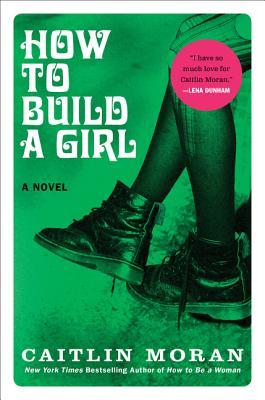There are several things that I REALLY love in the world: my family, my friends, my boyfriend, my dogs, books, and lastly, getting things in the mail. I also really love combining these things. Since my boyfriend probably won't send himself to me via FedEx, I usually settle for getting books in the mail - books that I order online, the rare ARCs that I win, and most recently, every three months, a
Book Riot quarterly box! Now, I don't want to spoil my review but...this subscription box is probably the best thing ever. It's truly a bibliophile's dream come true.
If you're unfamiliar with the words I am saying, Book Riot is a site that covers any and all things book-related. You have your reviews, lists, links, and quizzes. THEN you have special features like "Book Fetish" (a weekly catalog of bookish jewelry, clothes, art, and more), "Literary Tourism" (each post explores a certain location - bookstores, books set there, literary history, etc.), and "Reading Pathways" (suggested three book sequences to become familiar with an author). Needless to say, this website is the bomb.
While browsing around Book Riot a few months back, I noticed a section that I had overlooked in the past: "Subscriptions." Here, you can subscribe to Book Riot podcasts and...AWESOME REAL LIVE BOOKS DELIVERED TO YOUR DOOR! You have two options here:
- The Riot Read - For $30 you get "a great new book in your mailbox every
month, along with related articles, interviews, and explorations brought
to you by the writers of Book Riot." Right now there's only one subscription available, "The Main Event," which is mostly adult fiction. But Young Adult and Non-fiction Riot Reads are coming soon!
- The Quarterly Box - For $50, "every 3 months, Book Riot will send you a package of books and bookish stuff."
I should also mention that I previously subscribed to a similar service - Powell's Indiespensible. Their boxes are $40 and ship every 6 weeks, but I was usually less than impressed. I kept waiting to get better goods, but ended up cancelling after 4 deliveries. So while I was a
little wary of trying a similar service, looking at the contents of the previous Quarterly Boxes quickly helped me past my trepidation. I decided to take the dive - the BIG dive - and go for the Quarterly Box rather than sniffing around the monthly Riot Read.
After several weeks of staring down the mailman, my first Quarterly Box arrived yesterday! Here are the goods.





 Similarly, "Race & Entertainment" is comprised of Gay's thoughts and personal experiences with race in film and television. She specifically addresses the popular "magical negro" trope, the supersaturation of media with struggle narratives, and the assumption that positive depictions of people of color here and there - "scraps from the table" as Gay calls them - will ever be enough. Sometimes Gay's prose is lovely, sometimes it's hard hitting, but it always leaves the reader with new information, and new perspective, and ultimately, the desire for more.
Similarly, "Race & Entertainment" is comprised of Gay's thoughts and personal experiences with race in film and television. She specifically addresses the popular "magical negro" trope, the supersaturation of media with struggle narratives, and the assumption that positive depictions of people of color here and there - "scraps from the table" as Gay calls them - will ever be enough. Sometimes Gay's prose is lovely, sometimes it's hard hitting, but it always leaves the reader with new information, and new perspective, and ultimately, the desire for more.